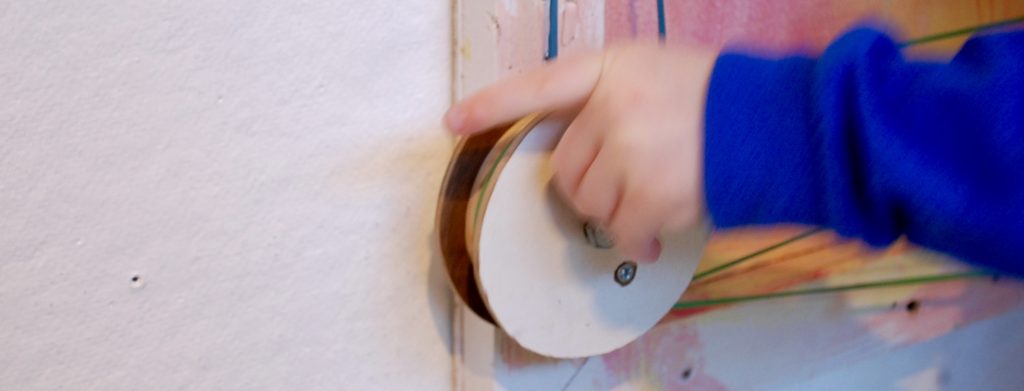Schemas is a word for urges that children have which we see them act out in their play: spinning, filling buckets, and building tall towers, for example. (Actually, we call them action schemas) Their repeated behavior forges connections in the brain, bringing about patterns of learning and growth. Knowing about schemas helps us recognise and support children’s urges and development, and can help us understand why children might at first glimpse seem defiant or “difficult,” when they are in fact working on brain development. So our task is to figure out how we can help them meet these needs in playful, constructive ways.
The term for each schema varies somewhat depending on who you talk to, but the underlying concepts are pretty consistent. One schema is rotational – the need to spin bodies or objects around, or even draw circles vigorously. We see this every day when children run in circles in the running area of the classroom. Another schema is trajectory – propelling themselves, throwing objects.
In the “Hooked on Snakes” post, you saw how children use their bodies in ways that they in turn recreate with toys, like crouching or hiding underneath objects, and then doing the same with the snakes (the “enclosing/enveloping” schema) – and schemas in general may first be satisfied with the whole body before being expressed on a smaller scale, and/or “vicariously” through an object.
So knowing that children enjoy the “rotational” schema, we installed this rubber band and gear structure, which provided both problem-solving and fine motor challenges as well.
The children are generally noticing that when gears and spools are connected by rubber bands, that turning one will turn the other, and both Lila and Henry started off observing this. Then they diverged.
Lila experimented with what happens when you dangle rubber bands off a spool, and then turn the spool by turning a gear that connected to it. Sometimes the dangling rubber bands actually go around, and sometimes they come off. She tried it again and again.

After a while, Lila began using the rubber bands with a baby, draping them around its head, saying that she wanted to cover it up – she put her hands over it to demonstrate. Finally, she decided that the best way to cover it up is with blankets!



Henry was putting more and more rubber bands between a gear and a spool, noting that it got increasingly hard to turn the gear.

Johann came over and did something different from both Lila and Henry – he attached four gears together, pleased when he found that turning one gear turned the rest.

Then Henry ran into a problem – one of his rubber bands got caught behind the gear and he couldn’t figure out how to get it out. Johann came over to help solve the problem – but it was never solved!

Many other children have enjoyed trying out the gear wall . . .








